The crowd-pleasing courtroom drama finds new cinematic life in Maggie Betts’ rousing sophomore feature The Burial, which opens in select theaters Oct. 6 and begins streaming on Prime Video Oct. 13. The film tells an entertaining and gradually deepening David and Goliath story about an independent funeral home owner, Jeremiah “Jerry” O’Keefe (Tommy Lee Jones), who not only wins a lawsuit against a massive corporate competitor that aims to put him out of his proud family business, but also exposes the deeply rooted systemic issues inside the so-called “death care” industry, with the help of his fierce attorney Willie Gary (Jamie Foxx).
The true story that inspired The Burial was the subject of a New Yorker article by Jonathan Harr, published with the same title in 1999. In it, Harr portrayed in great detail the specifics and the players of the real 1995 court case—including the Canada-based Ray Loewen, who owned more than 700 funeral homes and over 100 cemeteries in the United States; the Mississippi-based O’Keefe, whom Loewen aimed to force into bankruptcy; and the wildly successful lawyer that O’Keefe hired, Gary—a sharp, self-made, and flashy personal injury attorney from Florida, who came from from humble beginnings as a sharecropper’s son and later developed a taste for $3,000 suits.
Stylistically well-suited to a courtroom drama with another ensemble-driven and exquisitely orchestrated film, 2017’s Novitiate, under her belt, Betts explained how she adapted the true story for the screen in a recent conversation with TIME, maintaining the gist of the real case, but taking liberties to augment certain themes, particularly race. “For a large duration of it, [the real case] was a very boring contract trial,” says Betts. “Race was not central to it, per se. But it was always there, bubbling beneath the surface. I’m obviously interested in race as an African American director. And the [New Yorker] article [also] seemed to be interested in it.”
The real lawsuit
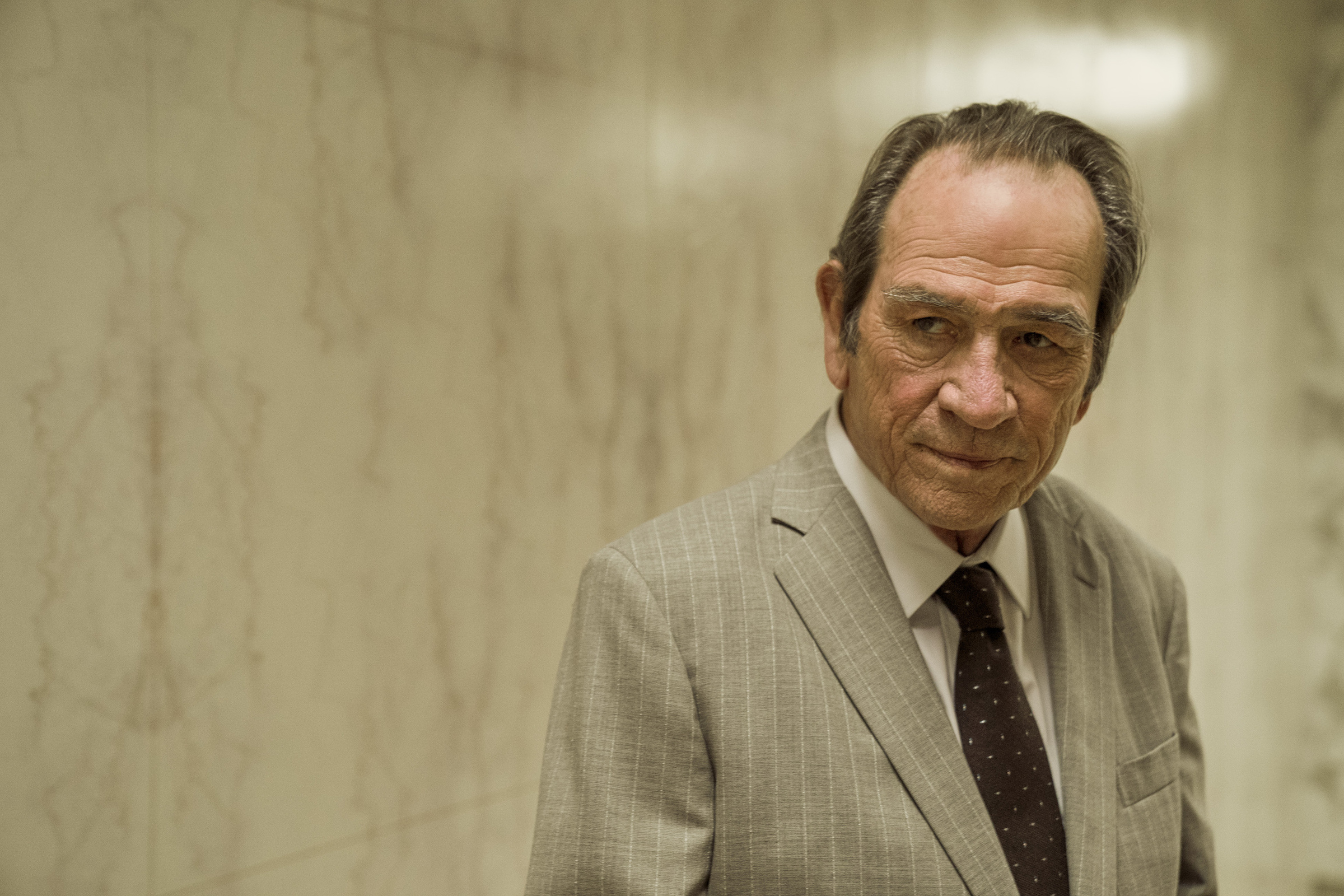
Owning eight funeral parlors in Mississippi, Jeremiah O’Keefe was a conscientious man whose Irish ancestors had been in the undertaking trade since the Civil War years, according to a story published in the New York Times in January 1996, just months after the trial concluded. The O’Keefes lost their longtime family home during the Great Depression, but Jerry managed to buy it back some 50 years later, turning his reclaimed childhood estate into a funeral parlor.
Jerry and his wife Annette also held a funeral insurance company, whose policies a Jackson-based funeral home was supposed to sell exclusively as per the two parties’ longstanding deal. But when Loewen bought said funeral home, he ignored the deal and started to sell his own insurance policies. Upon that breach of contract, O’Keefe sued the Loewen Group, which agreed to settle in 1991, with terms signed off by both parties. But evidence showed that the Loewen Group never honored the settlement as decided, and instead continued to string the financially strapped O’Keefe along, preventing him from doing business in the funeral markets that Loewen wanted to take control of as part of a disturbingly familiar and greedy Wall Street model of constant expansion.
Operating in accordance with his go-big-or-go-home principle, O’Keefe’s attorney Gary initially proposed a settlement amount of $125 million, an unthinkably high sum for a case of this kind. But upon Loewen’s refusal to settle, the dispute went to court and a majority-Black Jackson jury ruled in favor of Gary’s client, awarding them a figure that was significantly higher: $500 million in damages.
A fresh rewrite of a decades-old script
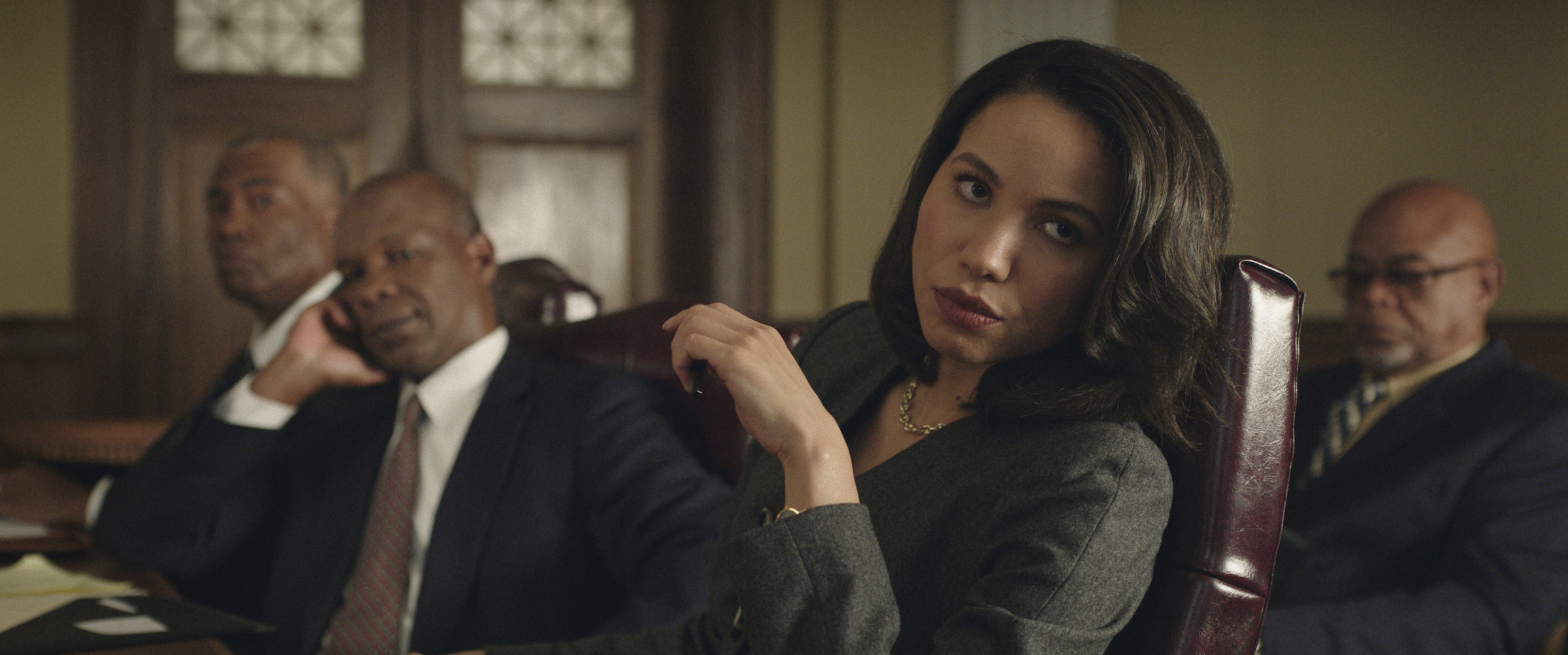
Initially written by Doug Wright (who is credited as a co-writer), The Burial mostly sticks with the above basic facts, but Betts takes generous liberties throughout. The script had been floating around since the late ‘90s, with directors like Alexander Payne and Ron Howard circling it at different points. When it came to Betts, she initially passed, preferring to keep her focus on the female experience as she did in Novitiate, which tells the story of a young woman’s journey through Catholicism and its darkly domineering power structures. But when Covid hit, with the future of her other projects uncertain, Betts reconsidered with one condition: she’d have the freedom to make the script her own. “It was a good script, but the point of view was dated,” Betts recalls. “It felt like it was from another era, from the ‘90s.” So in her rewrite, she took a freewheeling approach, adding various fictional characters and moments to the story, a method supported by the loosely worded “inspired by true events” disclaimer at the start.
While the Loewen Group had Black attorneys on their real-life team of counsels, they were all men. So one of the biggest updates Betts made was changing the lead Loewen lawyer to a powerful Black woman—the entirely fictional Mame Downes, played by Jurnee Smollett. Betts also added a number of other Black characters into the story, particularly to Gary’s team, to give their fun energy and banter what she calls “a Black flavor.” She explains, “I wanted [it] so that none of the Black characters had a need for white people in their life. Completely self-sufficient. Mame works for Ray Loewen, but she's on her own path and she doesn't need [him].”
A fan of old-fashioned courtroom dramas since childhood, Betts decided to fully embrace their somewhat hokey recipe instead of pushing against its conventions. “It’s such a weird genre, sort of dated,” she says with a chuckle. “But I used to watch them when I was a kid. I'm not even talking about A Few Good Men or that famous one with Harrison Ford [Presumed Innocence], because they’re almost too quality. But like Jagged Edge or Extreme Justice. I had a nostalgia for it.” So Betts studied and followed their formula, recognizing the conceptual freshness of Black attorneys representing white clients in her film. She also added dramatic embellishments to the trial throughout, including a fictional boardroom negotiation scene toward the end where O’Keefe and his wife refuse Loewen’s offer to settle.
Willie Gary vs. Jamie Foxx
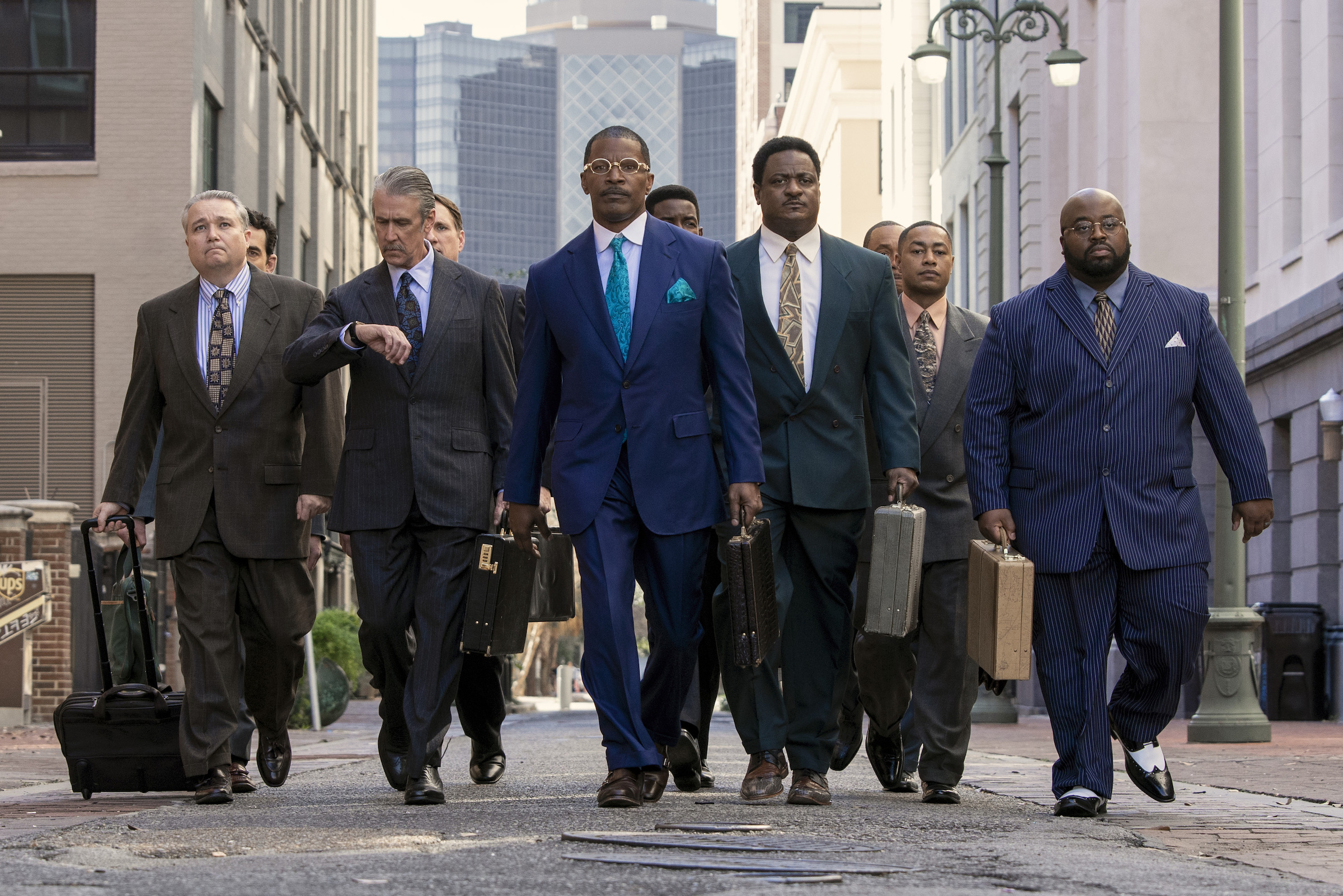
“I could never imagine anyone else,” Betts says about casting Foxx to play Gary. To her, Foxx’s comedic timing, his ad lib ability that often made her laugh to the point of tears, and his charming personality were a perfect match for the real character, a determined go-getter who lived in an ostentatious Florida mansion as depicted in the movie. Being deeply experienced in portraying real people, from Ray Charles to Just Mercy’s Walter McMillian, Foxx preferred to create his own Willie Gary, so he kept his time with the (still living) real Gary limited. But various true facts about him made it into the script, such as the time a racist gatekeeper turned him and his wife Gloria (Amanda Warren) away from an apartment complex they were going to rent when Gary was in law school.
Based on their extensive research, Betts and production designer Kay Lee matched Gary’s office to his real workspace almost exactly, and costume designer Mirren Gordon-Crozier took of cues from Gary’s old photos to build a showy wardrobe for Foxx. “Look him up,” says Betts with affection. “He doesn't wear as many colors. But everything is glistening and glittering.” For Gary’s suits—based in reality, but exaggerated—the duo was influenced by the R&B bands and musical figures of the era, adorning the looks with enough bling and the same kinds of expensive watches the real Gary wore. “It’s a representation of Black wealth. When Black people arrived at this moment, they're getting really rich and not trying to assimilate to what white wealth is. There was a kind of free expression. Like, ‘I've got money.’” Echoing Gary’s vibe, the team styled his entire entourage like a cheesy Black boy band. “I had this image of them coming down the hallway like a Bell Biv DeVoe video, a posse based on music videos from the ‘90s.”
The other key players
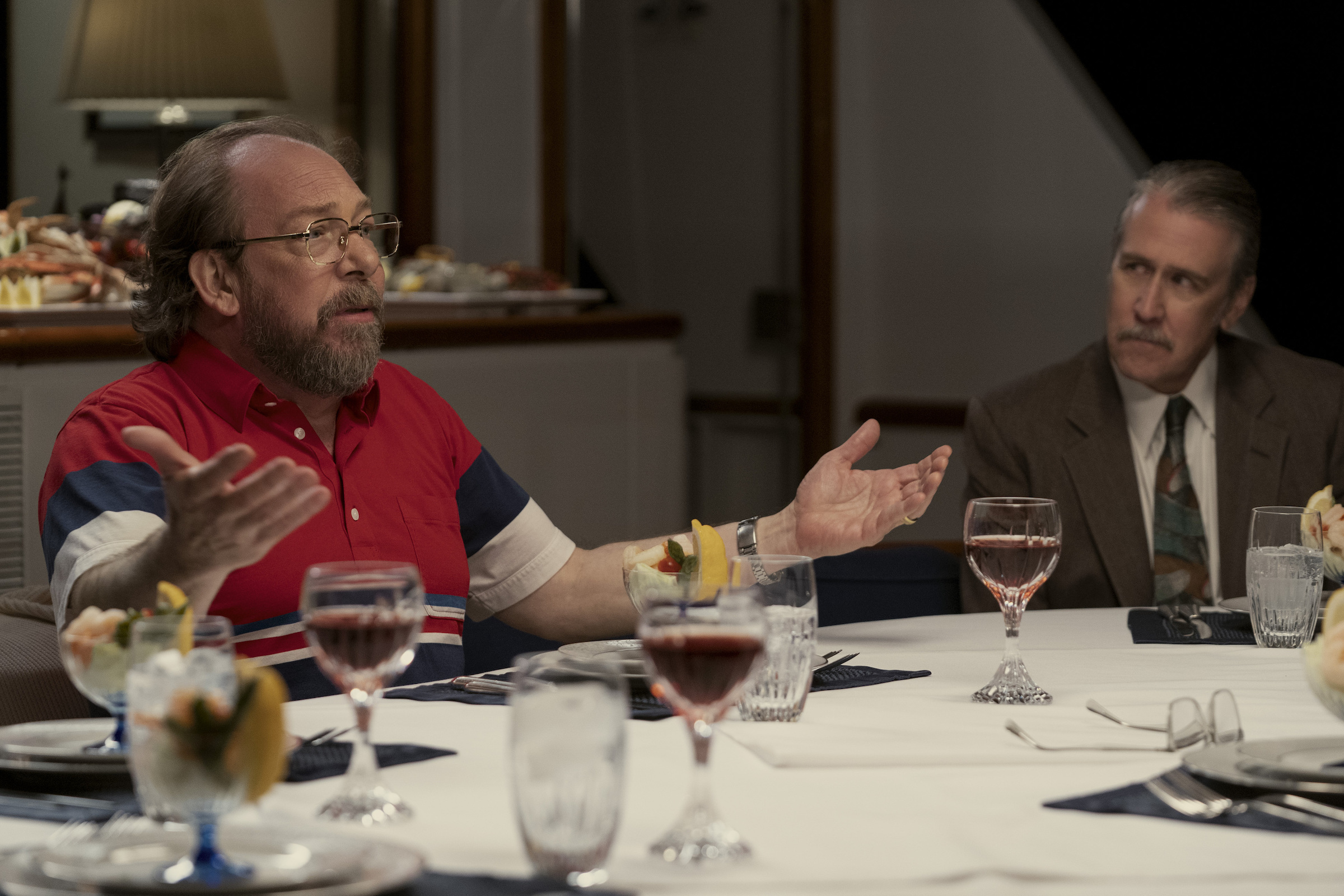
Taking a different tack than Foxx, Jones was keen to learn more about the actual person to align his performance with something closer to reality. Because O’Keefe died in 2016, Jones did his research through online videos, combining his findings with what he and the production team learned from the community that knew O’Keefe. “His family was still around. And when we were location-scouting funeral homes, [we realized] everybody knew them a little bit,” says Betts. “People had little stories about him, usually incredibly flattering and sweet. So Tommy Lee Jones had this affection and affinity for the real man.”
In the role of Loewen, Bill Camp plays up the real man’s capitalist, dog-eat-dog mentality. “I mentioned There Will Be Blood’s Daniel Plainview to him. Totally different movie, but just in the sense that this guy had no remorse about it,” says Betts. Because the topic of Loewen’s extravagant yacht came up numerous times in the real trial, Betts transposed his tone-deaf flaunting of luxury signifiers to a decidedly key scene in the courtroom, amplifying its significance through Camp’s exacting performance.
Elsewhere, Gary’s righthand counselor Hal Dockins (Mamaoudou Athie) and O’Keefe’s other attorney Mike Allred (Alan Ruck) were based on real people, with the actual Allred harboring a documented “prejudice against Black people,” which he confesses in the film as he did in real life. Also in Gary’s team, Reggie Douglas (Dorian Crossmond Missick) was loosely inspired by a real attorney named Robert Parenti, largely fictionalized by Betts in his fun and funny demeanor in step with the film’s tone.
How Betts mined the real story’s racial nuances
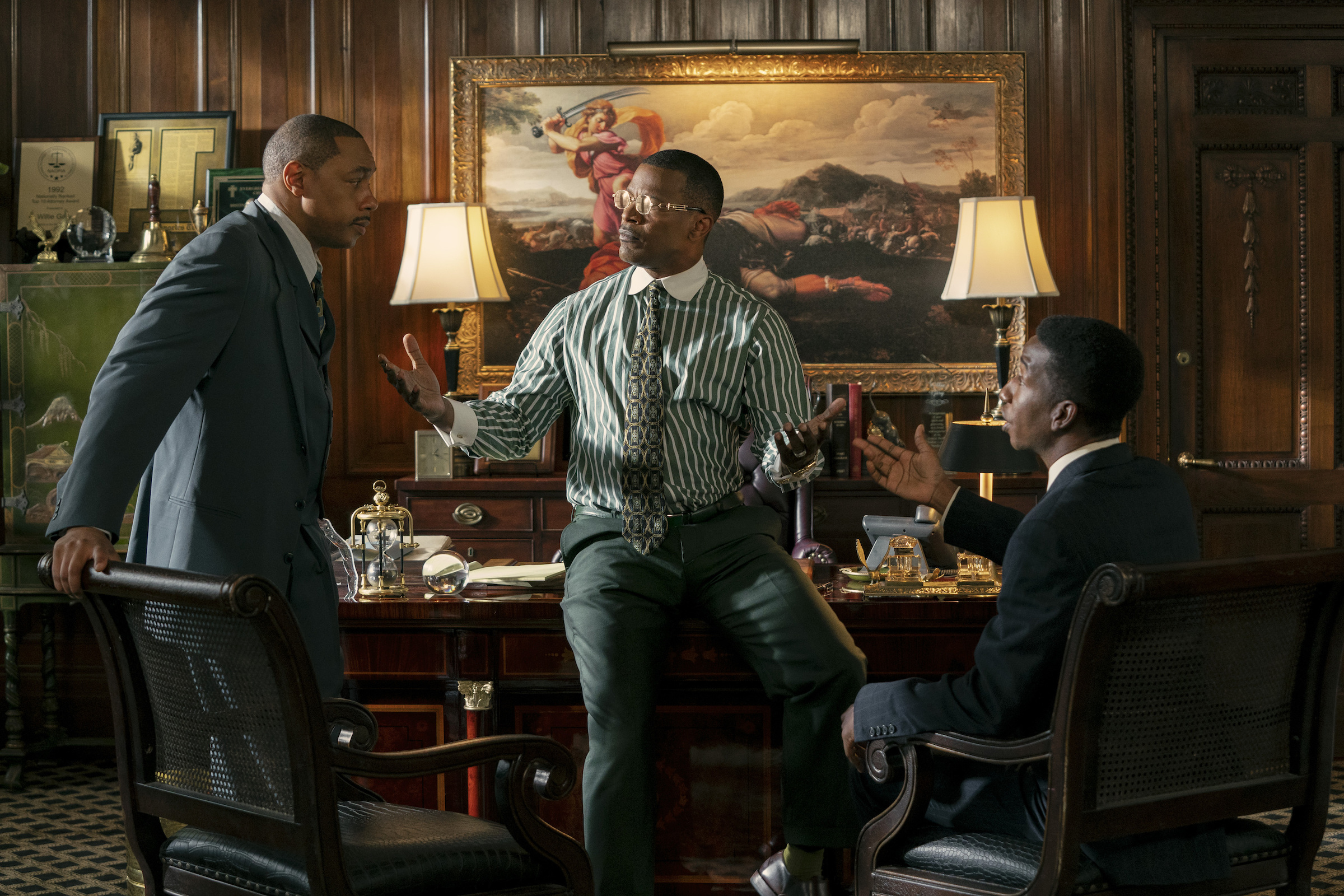
In the film, viewers learn about a standing deal that the Loewen Group had with the Black National Baptist Convention, which enabled Loewen to buy NBC’s graveyards and use Black church workers as sales agents to sell Loewen burial contracts in financially underprivileged areas. That story was very much based in truth, even though the disturbing and racist implications of it weren’t as apparent until Betts spelled them out in her script. “[Loewen] had been very exploitative of the African American community,” Betts says. “The deal with the NBC was basically getting Black people to take advantage of other Black people; like puppeteering.”
In order to magnify the truth behind this capitalistic manipulation, Betts wrote fictional (but truth-based) accounts of victim testimonies, edited together through an elegant montage of talking heads. Through it, we hear from actors portraying people who were price-gouged in their most vulnerable moments, or weren’t offered some of the common funeral services (like embalming or viewing at Loewen’s funeral homes) commensurate with the prices they paid, as the 1996 New York Times piece also notes. “Those testimonies were meant to [imply], it was bigger than this case. It was really about corporate exploitation, of not only poor minority groups, but poor people in general. So I took the theme of the trial and gave it these mouthpieces,” says the director.
With deliberate tonal shifts—from comedic, to serious and profound, back to some comedic relief as the trial progresses—Betts infused The Burial with narrative touch points where race incrementally became more relevant to the story. “And then it hits this big revelation about the history of race in America,” she says. “Ultimately, I thought, The South is like a graveyard for slaves, that capitalism was built on slavery. And these ghosts of the past were going to rise up and have influence over the trial.”
What happened after the trial
As the film’s end cards indicate, the Loewen Group eventually agreed to a $175 million settlement offer after appealing the jury’s verdict. Ray Loewen was forced to resign as President and CEO of his company not long after, with the Loewen Group eventually filing for bankruptcy. Meanwhile, the Bradford-O’Keefe Funeral Homes continue to thrive, the same end cards advise, remaining the largest family-owned funeral business in Southern Mississippi. As for Willie Gary, known to refer to himself as “The Giant Killer,” he went on to become one of the country’s most prominent trial lawyers, winning cases against the likes of Anheuser-Busch and the Walt Disney Company.
More Must-Reads from TIME
- Caitlin Clark Is TIME's 2024 Athlete of the Year
- Where Trump 2.0 Will Differ From 1.0
- Is Intermittent Fasting Good or Bad for You?
- The 100 Must-Read Books of 2024
- Column: If Optimism Feels Ridiculous Now, Try Hope
- The Future of Climate Action Is Trade Policy
- FX’s Say Nothing Is the Must-Watch Political Thriller of 2024
- Merle Bombardieri Is Helping People Make the Baby Decision
Contact us at letters@time.com